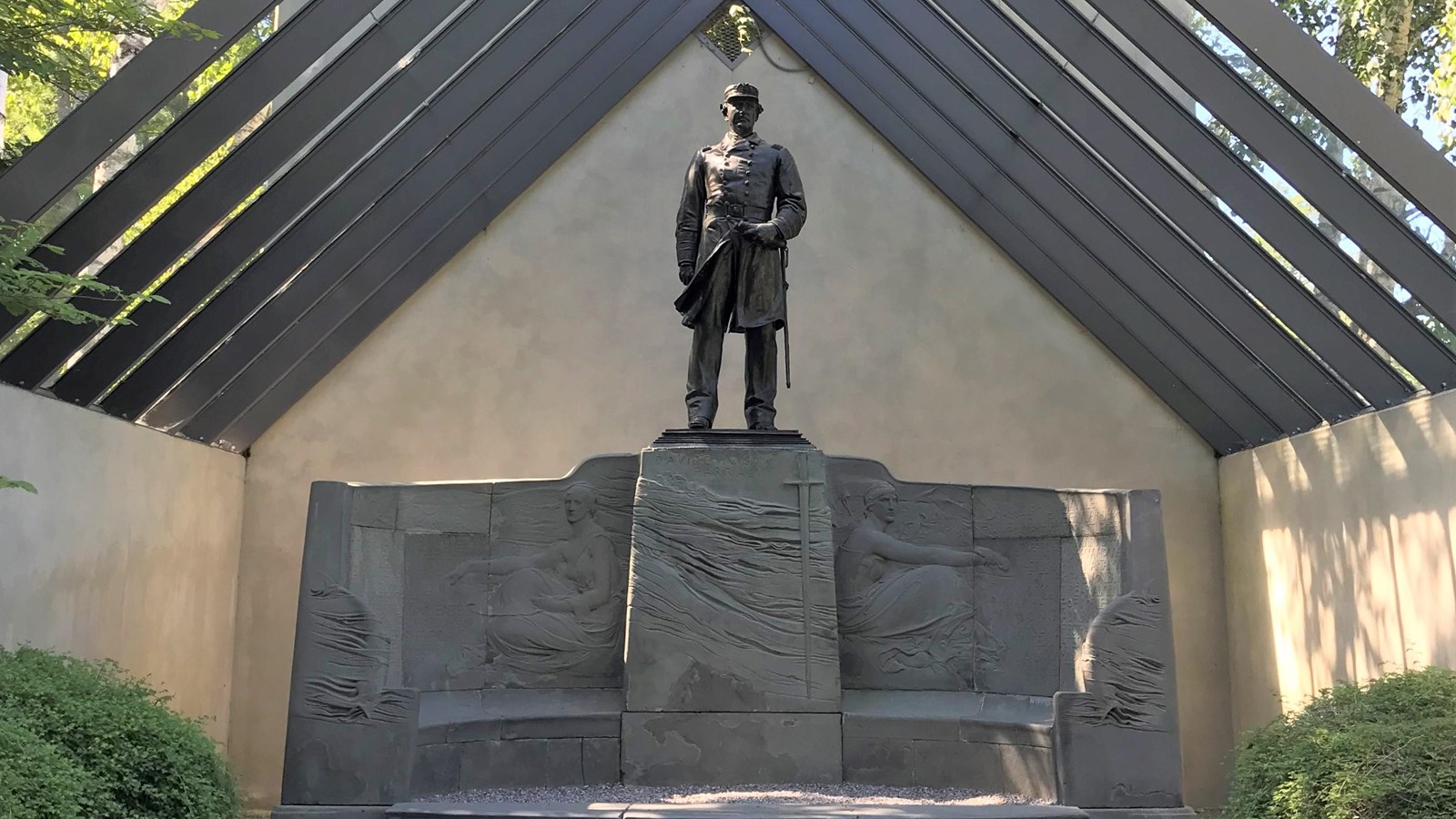Last updated: July 28, 2025
Place
Admiral Farragut Monument

NPS Photo
Quick Facts
Location:
Cornish, NH
Amenities
1 listed
Historical/Interpretive Information/Exhibits
"There is no cold conventionalism…but a penetrating imagination”, said fellow artist, Keneyon Cox (1856-1919), about this debut public commission by Augustus Saint-Gaudens (1848-1907). Unveiled in New York City’s Madison Square Park in 1881, the statue depicts Admiral David Glasgow Farragut (1801-1870) looking resolutely ahead. The Civil War commander stands in full naval uniform with feet apart. His coat billows open as if from a strong, salty gale while passersby may sit in the wide bench below to share the figure’s outward gaze.
Augustus Saint-Gaudens’ first major public commission immediately received praise from the press and art critics. The realistic representation and care for dramatic detail brought a new energy to American public sculpture. While harnessing this naturalism, Saint-Gaudens crafted a stoic and idealized hero at the heart of the city. The artist also pioneered the integration of architecture, landscape design, and monumental sculpture to create a powerful setting for his work. The invitation to sit at the semi-circular bench, known as an exedra, was designed by the architect Stanford White (1853-1906) and carved in bluestone by Augustus Saint-Gaudens and his brother, Louis (1854-1913).
Having finally received a large-scale commission, Augustus Saint-Gaudens married Augusta Homer (1848-1926) in 1877 after a five-year engagement. Shortly afterwards, the newlyweds worked together in a Paris studio where Augusta Saint-Gaudens contributed to the details of Admiral Farragut’s clothing. Though she would remain instrumental to her husband’s career and legacy, this was the only time she assisted in the physical process of sculpting. This piece would also be the first of many collaborations Saint-Gaudens undertook with longtime-friend, Stanford White.
In 1934, the City of New York replaced the deteriorating bluestone base with a granite replica. The original base was relocated here in 1984 and topped with a recasting of the statue.
